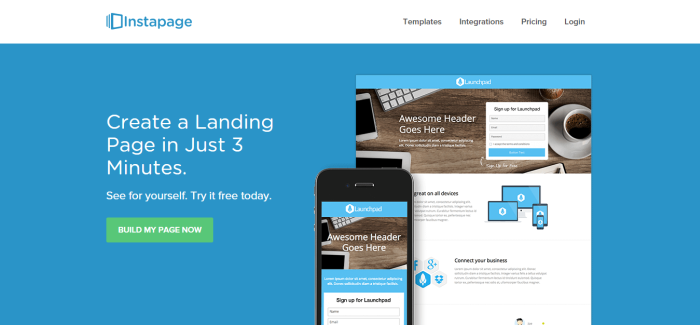How to Turn your WordPress Blog into an Online Shop

Do you have a successful blog site with a decent amount of monthly traffic? Repurposing it into an online store is a great way to start monetizing all your hard work.
At this point, you’re already done with half the job involved in establishing an e-commerce business. As long as the product you are trying to sell is related to the niche of your blog, you can leverage the authority and backlink foundation of your website to reach more people, position better in Google, and grow your business faster than if you were to start from scratch.
Just remember that the amount of traffic you receive does not automatically translate to high conversions. This is why you need to revamp and optimize your site the right way to make sure your efforts don’t go to waste. Without further ado, here are the four essential steps to repurpose a blog into your very own online store.
Step 1: Develop Effective Landing Pages
Don’t think for one second that installing a shopping cart plugin and filling your homepage with product images is all that it takes to build an online store. First, you must focus on developing a shopping experience that will lure in your target audience until they are ready to buy. And to get the job done, you will need landing pages.
In online marketing, landing pages are used to generate leads or close sales. Basically, it is a page where your potential customers can find a condensed version of everything they need to know before buying or signing up for something. This is why it must also contain a call-to-action (CTA) element.
There are a few things you need to remember when developing landing pages:
- Make sure the CTA is visible and not found all the way to the bottom of the page
- Use high-quality images that are relevant to your product
- Should you include videos, be sure to keep them short (maximum of 60 seconds)
- Use bulleted/numbered lists instead of heavy lengthy paragraphs
- Include testimonials/positive reviews
- Imply urgency using limited offers, expiration dates, etc.
Remember that it takes a lot of planning to make effective landing pages. The rest, including the color scheme and overall layout, can be determined on a trial and error basis. Don’t be afraid to perform split tests across different products to find the best landing page layout for your business. To speed up your productivity, you can use drag-and-drop page builders such as Unbounce and Instapage.
Step 2: Setting up the Payment Process
As much as possible, consumers want to find everything they need to purchase something in a single location. This is why integrating the payment processor you want to use in your online shop should be a priority.
Fortunately, you don’t need any technical knowledge when it comes to adding payment methods to your blog site. In WordPress, you can basically install shopping cart plugins that allow you to include various payment methods without writing a single line of code.
To accommodate most consumers, it is recommended for you to provide support for as many types of payment methods as possible while prioritizing the ones with the most users. Globally speaking, PayPal is the most-used payment service when it comes to online shopping. For the WordPress blog platform, there are plenty of plugins such as WordPress Simple Paypal Shopping Cart you can use to accept payments via PayPal.
In certain locations, other payment services such as Visa and MasterCard are preferred by more consumers. In case you need to support these payment methods in your online store, be sure to look for the right software suited for your e-commerce platform. For example, if you’re e-commerce platform is WooCommerce, then you can use Mollie Payments for WooCommerce to support a number of payment options.
Step 3: Create a Shipping System
For those who are selling physical products on an online shop, you will need to plan your shipping system, which can be a pain in the neck for many reasons.
The first issue is how shipping would affect your overall pricing. Sure, you can offer free shipping for domestic orders without batting an eye. But using the same freight service for customers overseas will either result in a loss or low sales due to high shipping fees.
If ever you wish to sell products to foreign countries, it is recommended that you use international parcel forwarding services to save costs. Take note that this may require your customers to sign up for an account depending on the mail forwarding service you choose.
Also remember that your choice for a mail forwarding company depends on your location. For example, if your principal location is in the UK, you can refer to services like MyUKMailbox to set up your shipping options. On the other hand, you can use Shipito or USAbox if you’re based in the US.
Step 4: The Blog
Just because you’re repurposing your blog into an online store doesn’t mean you should eliminate your blog or blog links altogether. In fact, now that you have an online store running, you might actually need to prioritize blogging even more.
Besides, altering or getting rid of the navigational links interconnecting your blog posts and pages can hurt your website’s performance in search engines. Instead, you should just recalibrate your site map and create a separate blog section.
Having a blog section to promote your business is helpful for improving your authority in your respective niche. It also helps in building the much sought-after value that will help your brand stand out in a highly competitive market. But most importantly, providing valuable information in the form of blog posts will help you develop something of utmost importance – trust.
To succeed in e-commerce, you will need trust from two entities: your audience, and Google. By providing useful information related to your business, your readers will start trusting your brand and your expertise. Your products will also gain extra exposure along the way.
Keeping up with your blog entries will also signal search engines that your site is active and is still providing updated content. In a metric known by SEO experts as trust flow, the integrity and quality of your content is measured and used by Google to determine the relevancy of your website. This is extremely important for your website’s search engine rankings.
Conclusion
Turning your blog into an online store is a lot easier if you take one step at a time. Just remember that once you’re done with all the grunt work, it takes persistence and a little marketing flair to succeed in the world of online selling. Good luck.
Don’t miss: 40 Influencer Marketing Tips From the Pros
Freelance writer for hire by day. Heavy sleeper at night. Dreams of non-existent brass rings. Writer by trade. Pro wrestling fan by choice (It's still real to me, damnit!). Family man all the time.






Thanks for the sharing..As long as the product you are trying to sell is related to the niche of your blog, you can leverage the authority and back link foundation of your website to reach more people, position better in Google, and grow your business faster than if you were to start from scratch.